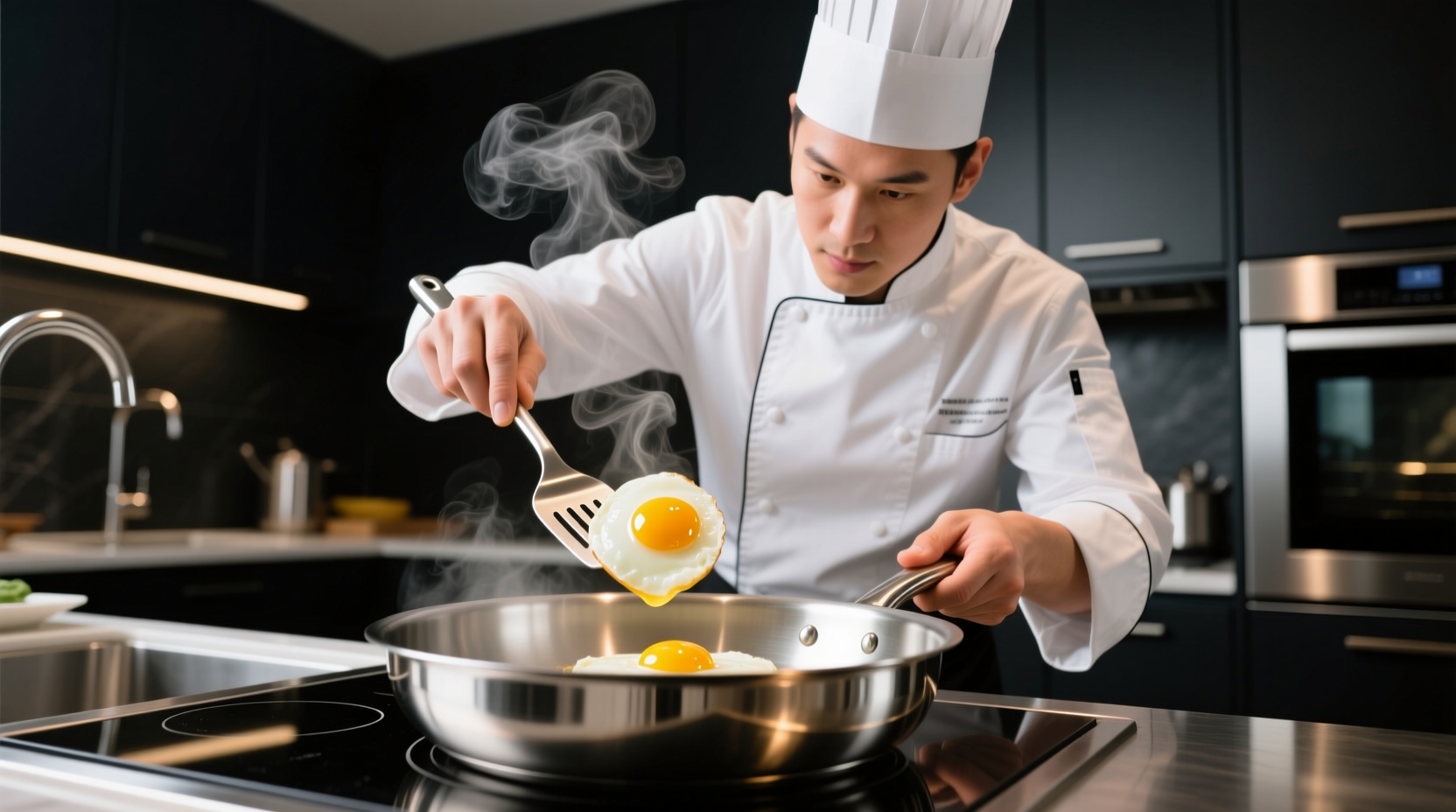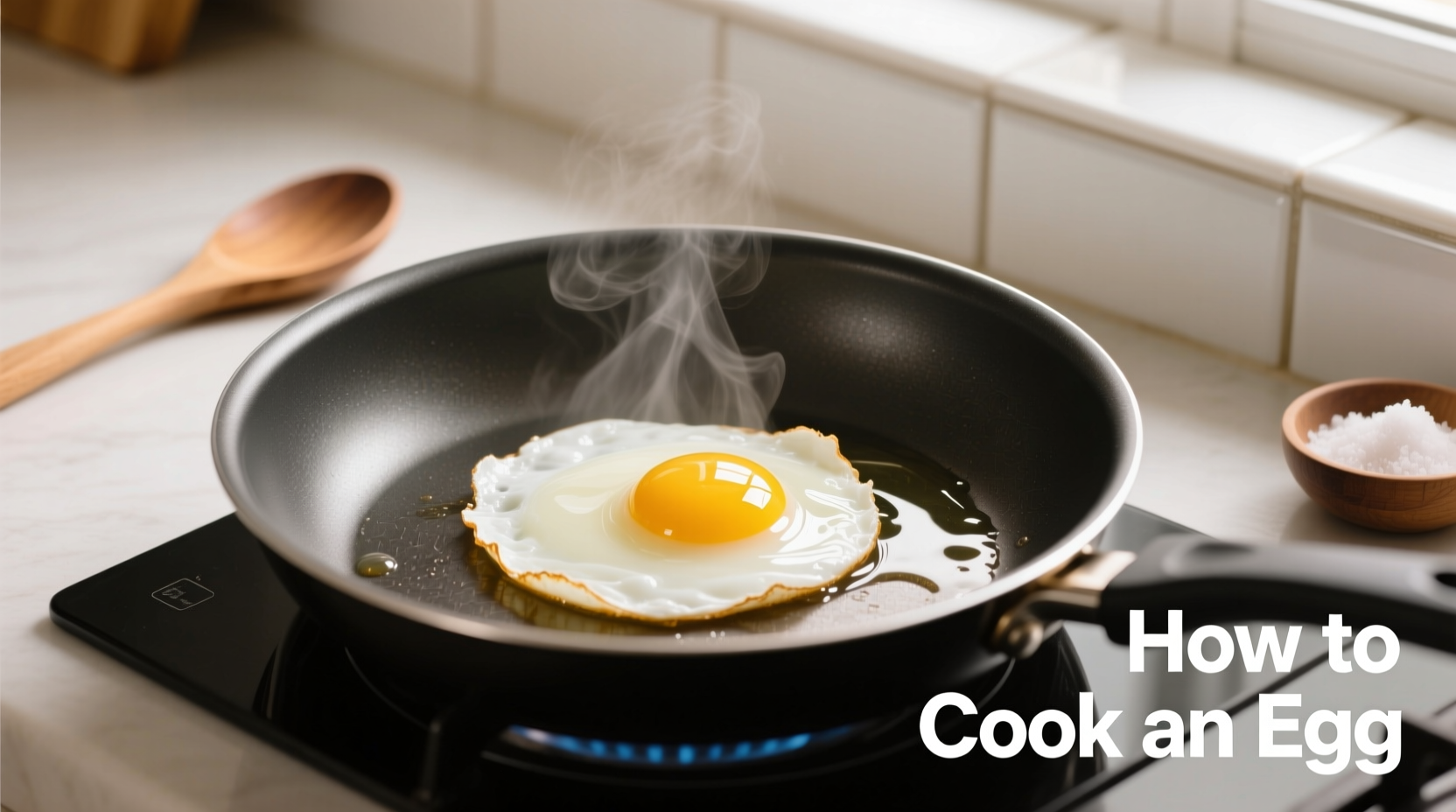Master perfect eggs every time with these professional techniques: boil for 6-7 minutes for soft-boiled, 10-12 for hard-boiled; fry over medium-low heat for 2-3 minutes per side; scramble with constant stirring over low heat; poach in simmering water with vinegar for 3-4 minutes. These methods guarantee restaurant-quality results at home.
The Essential Guide to Cooking Eggs Perfectly
Whether you're rushing through a weekday breakfast or preparing a special weekend brunch, knowing how to cook eggs properly transforms this humble ingredient into a culinary masterpiece. Eggs rank as one of America's most consumed proteins, with the average person eating over 290 eggs annually according to USDA data. Despite their simplicity, achieving consistent results requires understanding the science behind egg proteins and heat application.
| Cooking Method | Time Required | Best For | Temperature Range |
|---|---|---|---|
| Soft-Boiled | 6-7 minutes | Salads, ramen topping | 160-180°F water |
| Hard-Boiled | 10-12 minutes | Meal prep, deviled eggs | 200-212°F water |
| Fried (Sunny-Side Up) | 2-3 minutes | Breakfast plates | 275-325°F pan |
| Scrambled | 4-6 minutes | Family breakfasts | 250-275°F pan |
| Poached | 3-4 minutes | Eggs Benedict | 180-190°F water |
When to Use Each Cooking Method
Your choice of egg preparation should match both your available time and intended use. Understanding these context boundaries prevents kitchen disasters and wasted ingredients:
- Boiling works best when you need portable protein for meal prep or salads - but avoid boiling for dishes requiring runny yolks
- Frying shines for immediate consumption with toast, but requires constant attention to prevent burning
- Scrambling accommodates large batches efficiently, though it demands consistent stirring for optimal texture
- Poaching creates elegant presentations for brunch dishes, but has a steeper learning curve than other methods
The Evolution of Egg Cooking Techniques
Egg preparation has evolved significantly from ancient boiling methods to today's precision techniques. Historical records show that boiled eggs appeared in ancient Rome, while fried eggs emerged during the Middle Ages with improved cookware. The 19th century brought standardized timing for boiled eggs, and modern food science has refined our understanding of egg protein behavior at different temperatures.

Perfect Boiled Eggs Every Time
Follow these steps for flawless boiled eggs without the gray ring:
- Place eggs in single layer in saucepan and cover with 1 inch of cold water
- Add 1 teaspoon vinegar to prevent cracking (optional)
- Bring to rolling boil, then immediately remove from heat
- Cover and let stand: 6 minutes for soft-boiled, 10-12 for hard-boiled
- Transfer to ice bath for 5 minutes to stop cooking
According to the American Egg Board's food safety guidelines, properly cooled hard-boiled eggs remain safe for consumption for up to one week when stored in their shells.
Frying Eggs Like a Pro
Master different frying styles with these professional tips:
- Sunny-side up: Heat 1 tsp oil in nonstick pan over medium-low. Crack egg, cover, and cook 2-3 minutes until whites set but yolk remains liquid
- Over easy: After whites set, carefully flip and cook 30 seconds more for runny yolk
- Over medium: Flip and cook 1 minute for slightly firm yolk
- Over hard: Flip and cook 2-3 minutes until yolk is completely set
Temperature control proves critical - too hot causes rubbery whites, while too low results in uneven cooking. The ideal pan temperature ranges between 275-325°F for perfect texture.
Scrambled Eggs with Restaurant-Quality Texture
Achieve creamy, not dry, scrambled eggs with this chef-approved method:
- Whisk 2 eggs with 1 tbsp milk or cream and pinch of salt
- Heat nonstick pan over low heat with 1 tsp butter
- Pour in eggs and stir constantly with rubber spatula
- Remove from heat just before fully set (residual heat will finish cooking)
- Finish with fresh herbs or grated cheese
Food science explains why low heat works best: egg proteins coagulate between 144-158°F. High heat causes rapid protein bonding that squeezes out moisture, creating dry, rubbery eggs.
Avoid These Common Egg Cooking Mistakes
Even experienced cooks make these preventable errors:
- Using cold eggs straight from refrigerator - causes uneven cooking; let eggs sit at room temperature 15 minutes before cooking
- Overcrowding the pan - lowers temperature and creates steam, preventing proper browning
- Adding salt too early - can make scrambled eggs watery; add after eggs begin setting
- Using high heat - creates tough, rubbery texture; medium-low provides optimal results
Essential Equipment for Egg Preparation
You don't need specialized tools, but these items significantly improve results:
- Nonstick skillet (8-10 inch) for frying and scrambling
- Small saucepan with lid for boiling
- Silicone spatula for gentle egg handling
- Slotted spoon for removing boiled eggs
- Egg timer or smartphone timer for precision
According to culinary research from the Culinary Institute of America, using the right equipment reduces cooking errors by up to 40% when preparing eggs.











 浙公网安备
33010002000092号
浙公网安备
33010002000092号 浙B2-20120091-4
浙B2-20120091-4